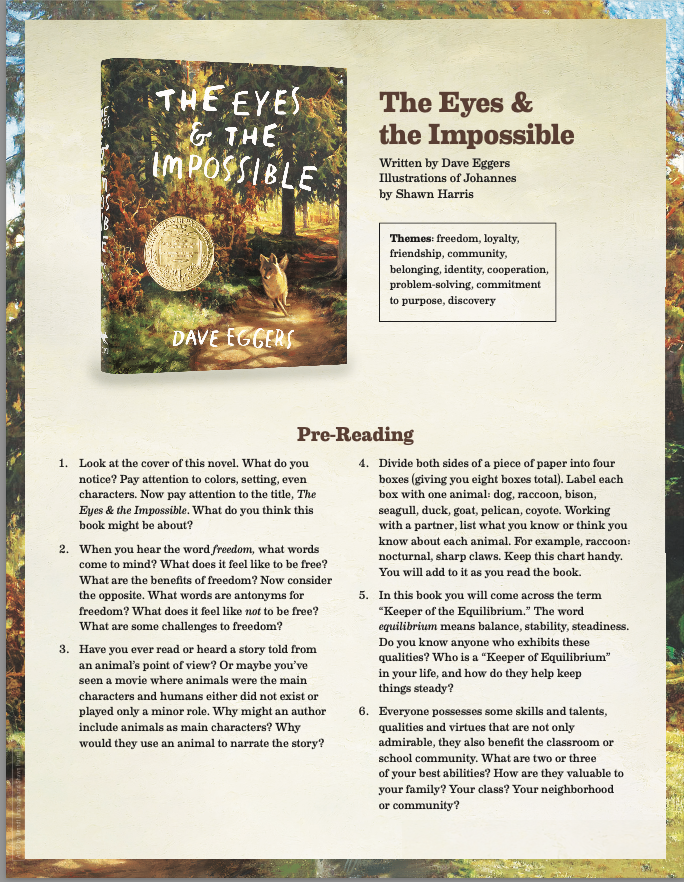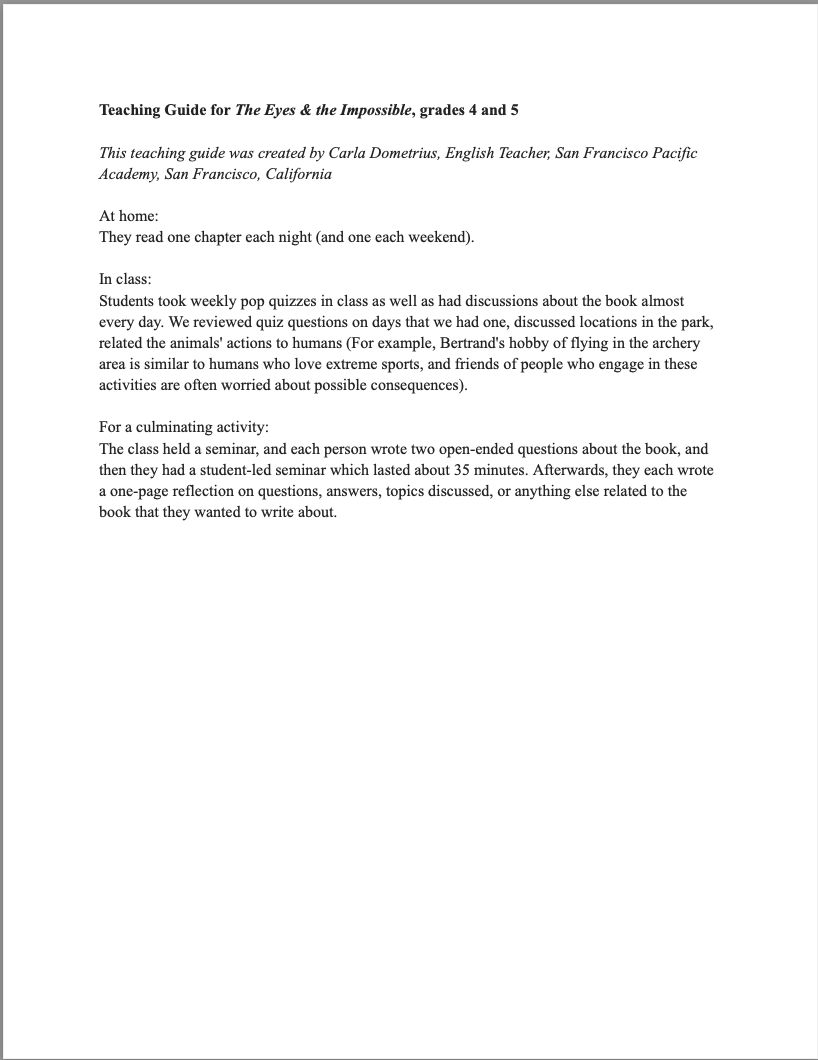
Tools & Testimonials for Teachers & Librarians
-
"This is the story educators are looking for to keep students engaged while teaching valuable reading skills. My students couldn’t wait to read each day and most importantly they learned about friendship, nature, and being a hero."
— Michael Cocheo, Grade 3 Teacher, Parsippany-Troy Hills Township, New Jersey
-
"The themes of friendship, freedom, and teamwork, expressed through beautiful prose, made The Eyes & the Impossible the perfect choice for our Community Book Read. Everyone from TK students to 6th graders, to our adult staff, found a connection to Johannes and his lively collection of friends."
— Jen Cannon, Kindergarten Teacher, Sonoma Mountain Elementary Charter School, Petaluma, California
-
"It is unlike anything I have ever read – but this oddness is likely to endear it to many readers both young and old. I suspect it would also be great fun to read aloud."
— Stephen Dilley, English teacher in Reading, England
-
"Each time I read, we all laughed, cried, and grew to love the characters! We also had great child-led discussions about what happened, what might happen next, and our own feelings. Thus is the nature of good literature."
— Kathy Slack, Grade 2 Teacher, St. Andrew Catholic School, Helena, Montana
-
"This book is a gift to children and the young at heart everywhere. My students in elementary and middle school loved reading about being a true friend and respecting others' decisions. I appreciate the way delicate topics such as self-acceptance and mental health were woven into the narrative. "
— Carla Dometrius, English Teacher, San Francisco Pacific Academy, San Francisco, California
Lesson Plans & Teaching Guides
Here we’ll be offering lesson plans and other tools teachers and librarians can use in their classrooms and libraries. Feel free to send your own to India Claudy at india@thehawkinsproject.org
To inquire about a school visit with Dave Eggers: Dave’s favorite thing is to correspond with classrooms via the USPS. Reach him at 849 Valencia Street, San Francisco, CA 94110. Occasionally he can visit Bay Area schools, in small settings. If you are a Bay Area school and want to discuss a casual visit, write to India Claudy at india@thehawkinsproject.org. Other speaking queries should be directed to Trinity Ray at the Tuesday Agency, trinity@tuesdayagency.com.


